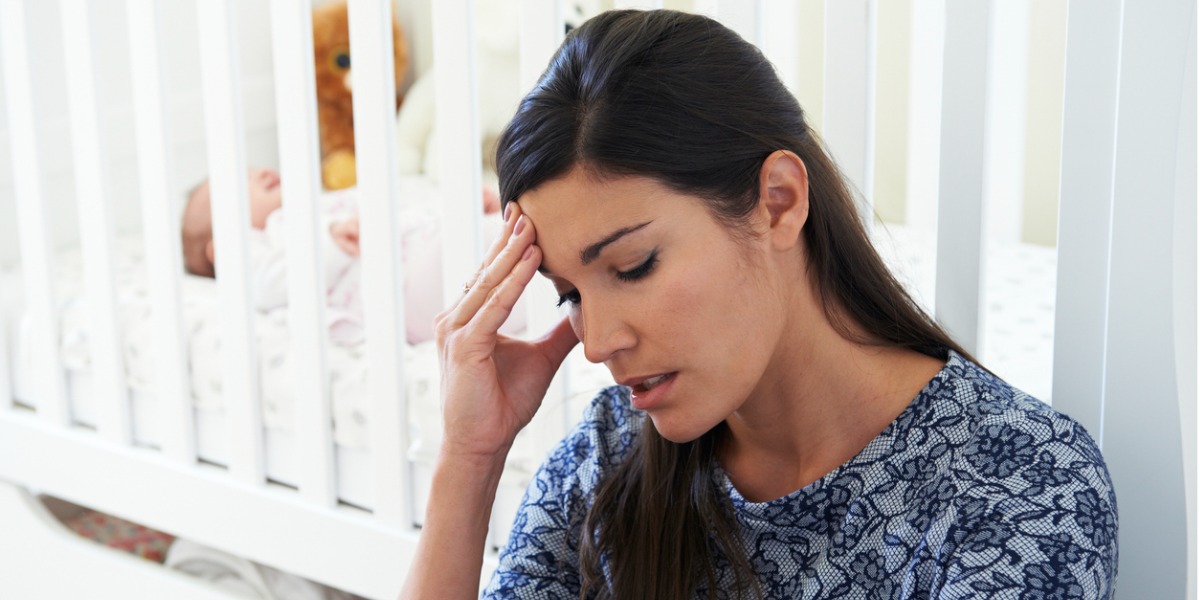A recent study in the journal JAMA Psychiatry suggests that some women who become pregnant after taking hormonal contraception may have an increased risk of developing postpartum depression (PPD). The team that conducted this study based their conclusions on an analysis of information from every woman in Denmark who gave birth for the first time between Jan. 1, 1996, and June 30, 2017.
What is Postpartum Depression?
The fifth edition of the Diagnostic and Statistical Manual of Mental Disorders (DSM-5) does not include an entry for postpartum depression. Instead, they call it major depressive disorder with peripartum onset. The peripartum specifier indicates symptom onset at any time during pregnancy or within four weeks after giving birth.
As described by the National Institutes of Health (NIH), most of the symptoms of postpartum depression are consistent with the DSM-5 criteria for major depressive disorder.
Common Symptoms of PPD
- A persistent sense of sadness or anxiety
- Feelings of emptiness, hopelessness, and helplessness
- Frequent episodes of agitation and irritability
- Significant decrease in energy (more than would be attributable to the physical impact of being pregnant and giving birth)
- Pervasive restlessness, which may manifest as an inability to sit still
- Cognitive difficulties, such as problems with focus, concentration, and memory
- Impaired ability to make decisions
- Disrupted sleep patterns not associated with the physical demands of caring for a newborn
- Dramatic change in appetite and resultant weight loss or gain
- Loss of interest in hobbies or other activities that were previously of great importance
- Diminished capacity for joy
- Generalized aches and pains, such as headaches or digestive problems, that are not the result of an obvious physical cause and that do not respond to medical treatment
In addition to occurring during or in the immediate aftermath of pregnancy, postpartum depression differs from typical depression by the presence of symptoms related to the infant:
- Finding it difficult or impossible to form an emotional attachment or bond with the infant
- Having persistent doubts about being able to properly care for the infant
- Experiencing recurrent thoughts of death, which may include suicidal ideation and/or thoughts of harming the infant
Postpartum depression can also include psychotic symptoms, such as delusions or auditory hallucinations telling the mother to harm their newborn child.
Important note: If you believe that you or someone you care about is at risk of suicide, please get help immediately. If you are in the United States, you can contact the 988 Suicide & Crisis Lifeline 24 hours a day, seven days a week, by calling 988 or visiting https://988lifeline.org/.
The Scope of the Problem
According to an October 2022 StatPearls article, experts estimate that about 14% of people who give birth (or one in seven new mothers) develop postpartum depression. The same article also notes that as many as 50% of PPD cases may go undiagnosed due to factors such as the following:
- Historically, most people called PPD “the baby blues,” once commonly viewed as a typical post-birth experience.
- Societal pressures and cultural expectations of motherhood continue to make it difficult for many women to acknowledge that they are in crisis or reach out for professional mental health services.
An April 2019 review in the journal Women’s Health found that postpartum depression could lead to an array of additional problems:
- Women who had postpartum depression scored lower on mood assessments more than a year after giving birth.
- Women with PPD had lower self-esteem than did mothers who had not developed postpartum depression.
- Women with PPD were more likely to exhibit decreased happiness, increased dysphoria, higher levels of anger, and lower levels of anger control.
- Women with a history of postpartum depression scored lower on questionnaires that assessed all aspects of quality of life.
- The risk of becoming homeless was 1.5 times higher among women with postpartum depression.
In addition to compromising the health and well-being of the person who has the disorder, postpartum depression has also been linked to various negative outcomes for the child.
The U.S. Department of Health and Human Services’ Office of Women’s Health (OWH) has reported that the children of mothers who had PPD may be at increased risk of learning delays, behavioral problems, poor stress-management capabilities, stunted growth, and obesity.
Previously Acknowledged Causes and Risk Factors
Before the publication of the Danish study that we mentioned at the outset of this article, experts had identified the following as potential risk factors for postpartum depression:
- History of anxiety, depression, and other mental illnesses prior to pregnancy
- Untreated trauma, especially a history of sexually assault
- Negative attitude toward being pregnant and/or disappointment in the baby’s gender
- Difficulties during pregnancy, including the need for emergency cesarean section delivery
- Giving birth prior to age 20
- Premature birth
- Lack of personal and/or social support
- Current or prior spousal abuse
- Using tobacco during pregnancy
- Abnormal levels of vitamin B6
- Sleep deprivation
Hormonal Contraception and Postpartum Depression
Although a history of mental illness had previously been identified as a possible PPD risk factor, the Danish study that was published by JAMA Psychiatry was the first research effort to link hormonal birth control, mental health struggles, and postpartum depression.
“When women start hormonal birth control, their body and brain are exposed to synthetic sex hormones and the body’s own production of sex hormones is suppressed,” Søren Vinther Larsen, the study’s first author, said in a May 2023 Neuroscience News article. “Some women appear to be more susceptible to these changes than others – in some, it may lead to a depressive episode.”
Larsen and the other members of the research team were associated with the University of Copenhagen and Copenhagen University Hospital. Features of their study included the following:
- The team analyzed data from 188,648 first-time mothers who had previously used hormonal contraception (HC).
- 5,722 of the study’s subjects had previously been treated for depression that had been linked to the use of hormonal contraception.
- 18,431 of the study’s subjects had experienced depressive episodes that were not associated with HC.
- The remaining 164,495 women who were included in the study had no history of depression.
Within six months of giving birth, 2,457 women in the study pool developed PPD. This means that, out of the entire group of subjects, the prevalence of postpartum depression was 1.3%.
When the researchers broke the study subjects into groups based on their history of depression, they found that those who had previously dealt with a depressive disorder that resulted from their use of hormonal contraception had the highest rate of PPD.
Hormonal Contraception and PPD: Results
- 5.2% of women who had histories of depression due to HC developed postpartum depression.
- 3.7% of women who had experienced depression that wasn’t related to hormonal contraception developed PPD.
- 0.9% of women with no history of depression struggled with symptoms of postpartum depression.
In the Strengths and Limitations section of their study, the researchers emphasized that they were not claiming that hormonal contraception on its own was responsible for an increased risk of postpartum depression. The elevated risk, they wrote, is highest among women who had previously struggled with depression due to hormonal contraception.
“A history of HC-associated depression may unmask PPD susceptibility, which may prove useful as a clinical tool in PPD risk stratification,” they wrote.


 Gianna Melendez
Gianna Melendez Jodie Dahl, CpHT
Jodie Dahl, CpHT